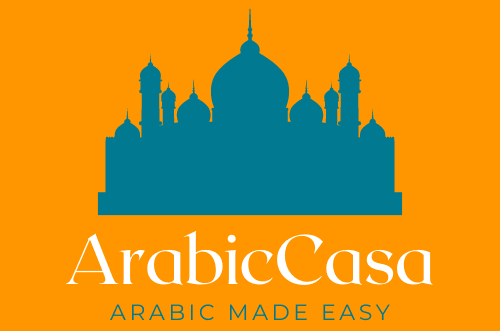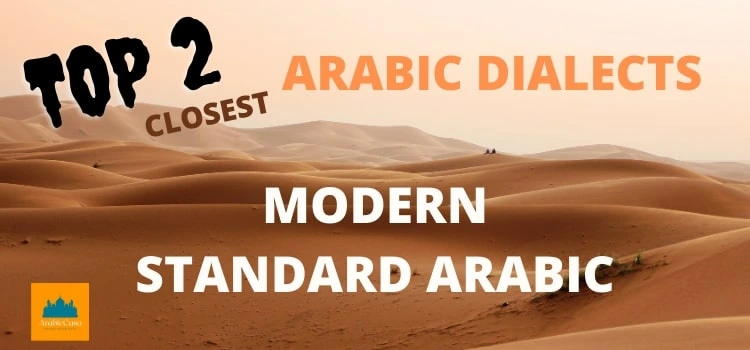Top 2 Closest Arabic Dialects to Modern Standard Arabic
Arabic, also known as “Arabic”, is a central Semitic language spoken by over 400 million people across the world. There are several Arabic dialects but some are considered to be the closest Arabic dialects to modern standard Arabic. This article will cover two of the closest Arabic dialects to Modern Standard Arabic: Egyptian and Levantine.
Arabic Dialects
There are many different dialects spoken in Arab countries. We can’t find say all of them are the same. Each one of them has its own unique features. For example, in Egyptian Arabic, some words are pronounced quite differently than in other dialects. Levantine Arabic has a lot of loanwords from French and English. Gulf Arabic has a lot of loanwords from Persian. Although, the most common dialects are Egyptian Arabic, Levantine Arabic, and Gulf Arabic.
Despite these differences, all Arab dialects are mutually intelligible. That means that people who speak different dialects can understand each other.
Two Closest Arabic Dialects to Modern Standard Arabic
The most closely related dialect to Modern Standard Arabic is Levantine Arabic. This dialect is spoken in the Levant region, which includes countries such as Lebanon, Syria, and Palestine. Levantine Arabic has many features in common with Modern Standard Arabic, including similar grammar and vocabulary.
Another close dialect is Egyptian Arabic. This dialect is spoken in Egypt and has many similarities to Modern Standard Arabic. However, there are some differences between the two varieties, such as pronunciation and some vocabulary choices.
Other close dialects include North African Arabic, Gulf Arabic, and Maghrebi Arabic. These dialects are spoken in countries such as Algeria, Morocco, Tunisia, and Libya. They share many features with Modern Standard Arabic but also have some unique characteristics of their own.
Whereas, Levantine Arabic is spoken in the Levant region, which includes Syria, Lebanon, Jordan, and Palestine. It is also closely related to modern standard Arabic and shares many features with it.
One of these is the dialect spoken in the country of Oman. The Omani dialect has some features that are not found in other Arabic dialects. For example, Omani Arabic has a lot of loanwords from Persian and Hindi. This is because Oman was historically under the influence of these two cultures.
Another Arab dialect that is not as close to modern standard Arabic is the Tunisian dialect. The Tunisian dialect has some French loanwords, due to the fact that Tunisia was once a French colony. Tunisian Arabic also has some Berber influences.
Overall, there are a few Arab dialects that are not as close to modern standard Arabic as others. However, this does not make them any less valid or important.
Features of Egyptian Dialect
The Egyptian dialect is one of the closest arabic dialects to Modern Standard Arabic. This is due to a number of factors, including the fact that Egypt was the center of the Arab world for centuries. The Egyptian dialect has a number of unique features that set it apart from other dialects.
One of the most notable features of the Egyptian dialect is its use of the letter ‘ayn. This letter is used in words where other dialects would use a glottal stop. For example, the word for ‘eye’ in Egyptian Arabic is ‘ayn whereas in other dialects it would be ‘in.
Another feature of the Egyptian dialect is its use of emphatic consonants. These consonants are pronounced with more force than their non-emphatic counterparts. Emphatic consonants are often used to add emphasis to a word or phrase.
The Egyptian dialect also has a unique pronunciation of certain words. For example, the word for ‘sun’ is pronounced as ‘shams’ in Egyptian Arabic. This is different from other dialects where it would be pronounced as ‘sin’.
Overall, the Egyptian dialect is one of the closest dialects to Modern Standard Arabic. Its unique features make it
Features of Levantine Dialect
Levantine dialects are the closest Arabic dialects to Modern Standard Arabic. They are spoken in the Levant region, which includes Lebanon, Syria, Jordan, and Palestine.
Levantine dialects have several features that make them unique. One of these features is the use of the letter “heh” as a feminine marker. This is used to indicate the gender of nouns and adjectives. Another feature of Levantine dialects is the use of the word “عشان” (‘eshan). This word has multiple meanings, including “because”, “for”, and “in order to”.
Levantine dialects are also known for their use of colloquial expressions and slang words. This makes them more informal than other Arabic dialects.
Overall, Levantine dialects are the closest Arabic dialects to Modern Standard Arabic. They have several unique features that make them stand out from other dialects.
Conclusion
There are many different Arabic dialects, but some are closer to modern standard Arabic than others. The top three closest dialects to MSA are Egyptian, Levantine, and Gulf Arabic. Each of these dialects has its own unique features, but they all share a commonality with MSA that makes them more understandable to speakers of other dialects.
If you’re interested in learning more about the different Arabic dialects, be sure to check out our article on the topic. We know there are many more than three Arabic dialects, but we thought this would be a good place to start. If you have any further questions about the mentioned dialects or would like to see an additional dialect profiled in-depth on our blog, let us know in the comments section below!

